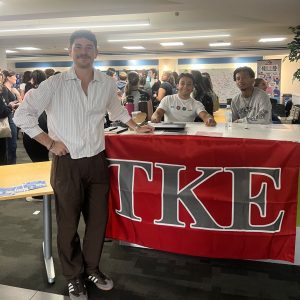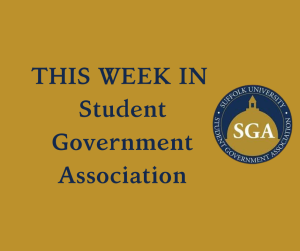NESAD still lacking
December 2, 2015
The New England School of Art and Design has yet to become more involved in the Suffolk community. With a new administration in place, students and faculty are wondering when a requested change will ever take place.
Founded in 1923, NESAD had no connection with Suffolk and was known as The New England School of Art until a renaming and relocation in 1975. It wasn’t until 13 years later that the academic collaboration between NESAD and Suffolk took fold.
This partnership allowed NESAD students to enroll in Suffolk general education courses in order to complete both Bachelor and Master Degrees of Fine Arts.
“Originally, we wanted to keep a sort of anonymity from Suffolk. Now I think that is starting to change,” said Alexander Cahoon, admissions counselor at Suffolk University, in regards to the school’s relationship with the rest of Suffolk.
Throughout the years, there has been a growing disconnect between NESAD and the other three schools of Suffolk. While it may have originally been intended to remain separate, students of NESAD have been voicing their discontent of the separation.
“For having a nationally top-ranked program, we don’t get a lot of recognition or anything from Suffolk,” said junior interior design major Kaitlyn Gannon.
Since the merger, NESAD has been mentioned in numerous publications and has received recognition by being ranked as having one of the top 10 best interior design programs in the United States by DesignIntelligence Magazine. However, many Suffolk students are barely aware that NESAD exists.
“All I know about NESAD is that it’s Suffolk’s art school, but I’ve never been and I didn’t even know it existed until sophomore year, I think,” said print journalism major Haley Martin.
Gannon spoke on the lack of support received from Suffolk. In the eyes of Suffolk students, on-campus housing, meal plans, and proper class schedules are university essentials. However, these basic amenities are what NESAD students are fighting for.
She explained that NESAD hides in the shadow of Suffolk. If the school were to become a completely independent program, Gannon believes it would become much more widely known and recognized, just as other art schools in the Boston area.
Although NESAD is lacking in participation in the Suffolk community, their pride for their school is very prevalent.
“A lot of us put NESAD on our projects, not Suffolk, and that’s what we tell people when we go to conventions,” Gannon said.
With the recent appointment of President Margaret McKenna, optimism sparked for NESAD. However, changes have yet to have been made and it is unclear in what direction the program is moving.






